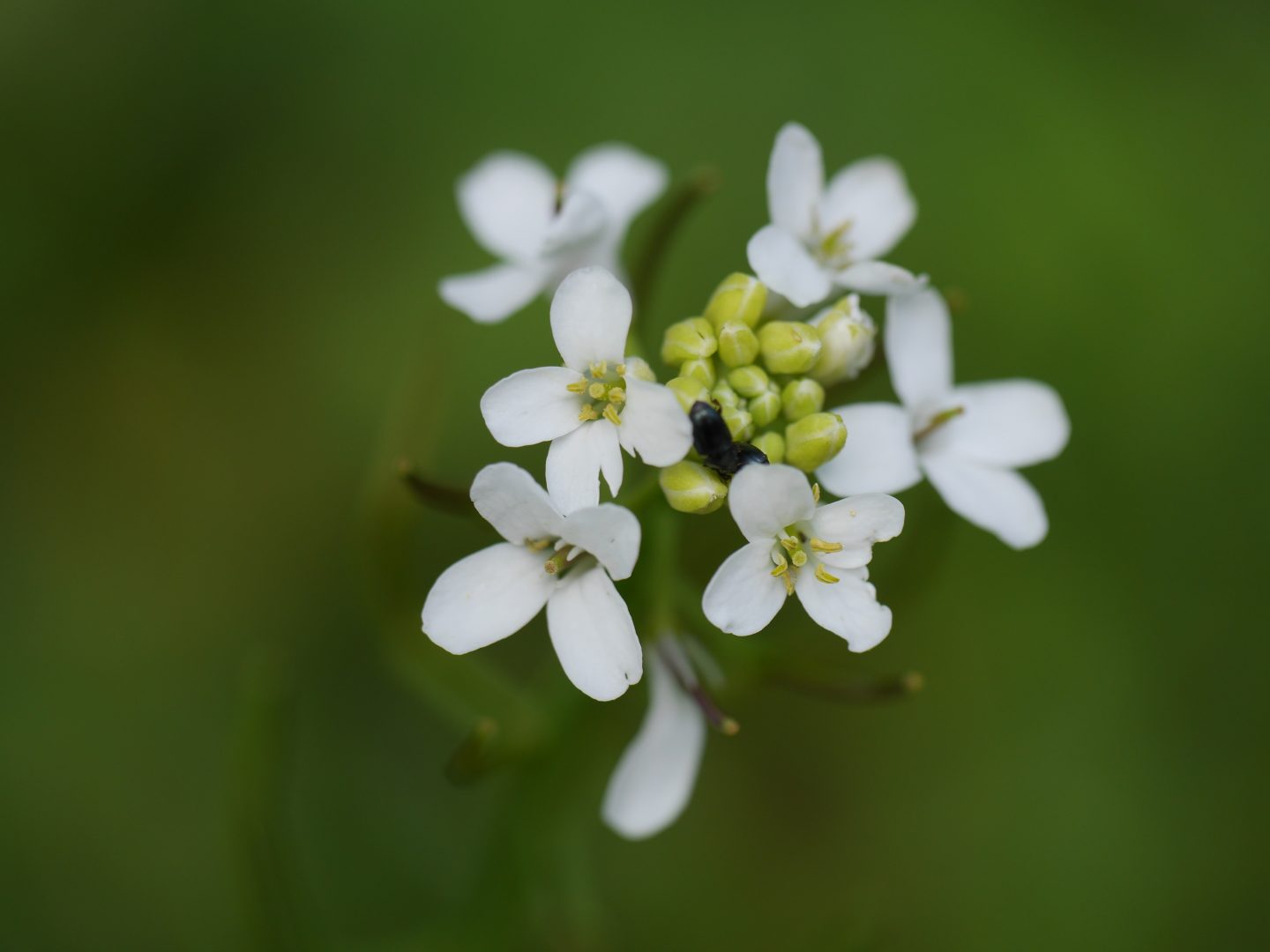We all love flowers, their blooms are a sign of spring, that the cold, dark winter is over. They decorate our lawns and homes; they scent our candles, soaps, and perfumes. But have you ever stopped and looked at a flower, and wondered how each petal, each piece of each flower is so perfectly crafted? How does the plant know how many of each flower part to grow, and where to put them? This is where developmental biology comes in and a special set of genes called MADS-box genes.

Arabidopsis thallium flower. © Marie-Lan Nguyen / Wikimedia Commons / CC-BY 2.5
You may have heard of genes similar in animals, the homeotic, homeobox, or Hox, genes. These genes are essential to the correct development of every animal’s body plan, including ours. They ensure our ears are on our head, that our fingers are on our hands, and that our arms end up on our shoulders. These genes are the blueprints for our development, and for a long time we thought these were unique to animals, but researchers have found genes homologous to our Hox genes: the MADS-box family of genes.
Floral homeotic genes have been most thoroughly studied in regards to flower development, although they are also involved in the development of other plant parts. Specifically, the Arabidopsis genus of flowers has been studied extensively; almost its entire genome has now been sequenced. Floral homeotic genes have been extensively researched because they produce such consistent flower patterns, each whorl of each flower having the same number of organs in the same positions. This means that when experimenting, it is also easier to identify mutations, such as extra petals or even an extra flower growing within another flower.
From the research on floral homeotic genes, as model called the ABC model was suggested and is generally accepted. This model states that “Class A genes function in the first two whorls; class B, in whorls 2 and 3; class C, in whorls 3 and 4.” This model is well represented in this diagram, which visually shows how each gene interacts to form the four whorls of a flower. The whorls being sepals, petals, stamens, and carpels, the growth of each is controlled by a unique combination of homeotic genes.
Comparison of the four flower whorls and the homeotic genes that act in their development. Author: Ian Alexander, CC4.0
If any of these genes were to lose their function, by mutation for example, there would be a change in the organs produced in each whorl. For example, if B were to lose function, the petals of the flower would be replaced by sepals, as only A would be active in the second whorl. So the function of all of these genes together is critical in the growth and patterning of the plant’s reproductive organ: the flower.
So these genes perform a similar function to homeobox genes in animals, but in animals they are activated in the early development stages of an embryo. In plants, the development of flowers must be done after the plant has reached maturity, so how is this accomplished?
Plants have a body of cells, called the meristem that is undifferentiated and can therefore be differentiated into any cell type that is needed by the plant. This allows for the plant to produce leaves, flowers, whatever is needed for survival and to do so homeotic genes are activated. This leads to the development of the flower, the reproductive organs, and later these same genes have roles in the development of seeds.

Arabidopsis mutant, you can see the extra petals emerging from the 3rd and 4th whorls. Author: By Daniel Ocampo, CC BY 2.0
Now, we know that plants and animals are very different, and already this similarity in developmental genes is incredible, as each set are thought to have evolved differently, but there are some even more incredible similarities in the regulation of these genes. In animals, specifically Drosophila, there are regulatory genes called “polycomb” and “trithorax,” that activate and repress homeobox genes, respectively. Because of the apical meristem, and the ability of plants to continue to differentiate for their entire lives, it came as a surprise to researchers that plants had an analog to the Drosophila gene, meaning it performs the same function (permanent deactivation of the gene), but evolved separately, like the floral homeotic genes. Even more interesting, is an analog for trithorax has also recently been characterized, a floral gene called ATX1, with similar functions. This is interesting because you would think that plants would not want to permanently turn on or off genes in cells originating in the meristem, but these analogs suggest otherwise.
The development and genetics of plants are complicated, and beautiful, resulting in the flowers and greenery we all know and enjoy. By understanding how plants develop, we can gain more insight into the genetic and developmental history of plants, and even look at similarities, possible connections, to the animal kingdom.


Recent Comments